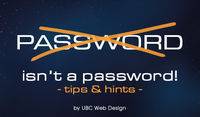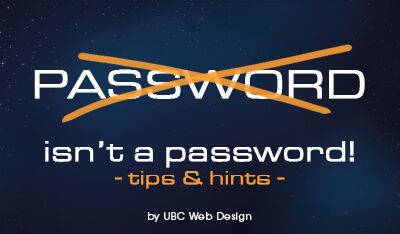Categories
Blog«Password is not a password
Password is not a password
UBC Web Design
15 July 2015
20 December 2025
2.02 minutes
Passwords, Security, Websites

Have you ever thought about how secure your password is? Could someone guess your passwords and gain access to private accounts?
This blog is a basic overview of common passwords that people are using and how to make your passwords stronger and less obvious to guess.
How to create a strong password
- Make your password at least 8 characters long.
- Utilise upper and lowercase letters in your password:
ABC - abc. - Incorporate numbers into your password:
0, 1, 2, 3, 4, 5, 6, 7, 8, 9, 0. - Incorporate symbols into your password:
~ ! @ # $ % ^ & * ( ) _ / - + { } : ” < > ? , . ’ - Utilise partial words in your passwords: Aust#%1726!.
Things not to do
- Don’t reuse passwords over and over again; if one password gets compromised they are all compromised.
- Don’t use your own name as a password.
- Don’t use your business name as password.
- Don’t replace an “a” with an @ symbol.
- Don’t replace an “s” with a $ sign.
- Don’t replace an o with a 0 (Zero).
- Don’t use full words.
Change your password
For security reasons I strongly recommend that you take the time to change your password periodically.
Common passwords that you should avoid!
- password
- password1
- 123456
- 1234
- qwerty
- qwertyuiop
- incorrect
- dragon
- abc123
- access
- letmein
- welcome
- computer
- admin
- secret
- football
Check out this interesting video for further information.
Further Information

Written by
Matt Salter
Project Manager / Developer
UBC Web Design



